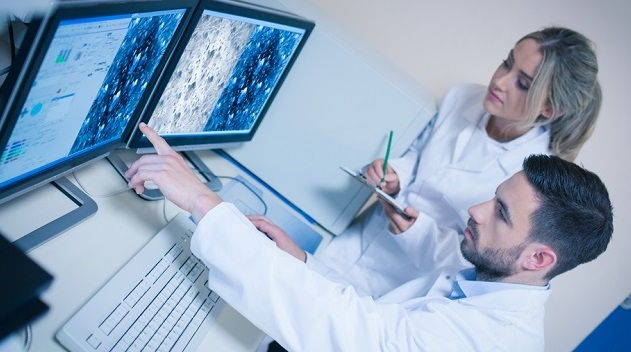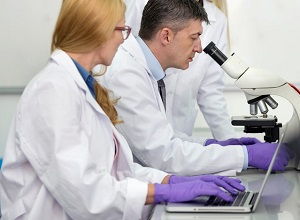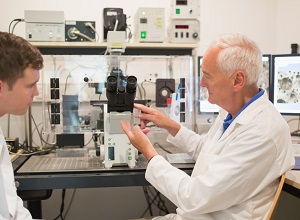Career - Scientific / medical illustration

Medical illustration focuses not entirely, but largely on human anatomy. Medical illustration may involve images or animations explaining body parts & physiological functions, or images explaining how a particular surgical procedure takes place, or how a medical device interacts with the natural body, etc. Scientific illustration focuses not entirely, but largely on human biology at the cellular and molecular level. A typical scientific illustration may show how cells interact with each other, or how molecules interact within a cell, etc. It is common for an individual illustrator to be skilled in both medical & scientific illustration. A single illustration project may involve showing the cellular structure at the microscopic level alongside the anatomical structure at tissue and organ level, hence showing both the cells and the region of the body where they derive.
There are several ways to become a scientific / medical illustrator. Specific undergraduate bachelor degree programs for scientific / medical illustrators are very rare. The best way to become a scientific / medical illustrator is to do any medical laboratory or human biology associated bachelor degree followed by a postgraduate course specifically in scientific / medical illustration. (Most postgraduate courses are at the Masters level). This pathway ensures the best recognizable qualifications. The postgraduate pathway allows individuals currently working in or studying for medical, laboratory or human bioscience degree based careers, to have an additional career option simply by building postgraduate illustrator qualifications on top of their primary qualifications.
Another option is to do a double degree, combining a course including general art, illustration, animation, multi-media etc, with a medical laboratory or human biology associated course etc. In simple terms, a credible scientific / medical illustrator, needs to have a combination of formal skills in both art and medical science knowledge. The art component should include highly computerized digital technologies as this is the future. However, it is also good to have traditional pencil skills. It may be advantageous to be able to quickly sketch new ideas and make notes, or sit down with a client (pen & paper in hand) discussing their needs. One advantage of a double degree approach is that it will allow you to gain broad illustrative skills that are not specific for medical or scientific illustration. This will give you the capacity to work in both medical / scientific illustration as well as illustrating in a range of other fields.
You could work as a scientific / medical illustrator for book or journal publishers, medical device manufacturers, research institutes, private illustration / animation companies, education providers, and more. A career in scientific / medical illustration will also give you the opportunity to be your own boss and work from home. An online business operating from home is one of the cheapest and easiest types of businesses to establish. With an online presence you will be able not only to reach clients in your local area, but also in other parts of the world.
See scientific / medical illustrators & animators for a list of illustrators & animators. You can visit the illustrator's websites to see the type of work they do. Beneath the list of illustrators & animators, there is also a list of universities & institutes offering study courses in scientific / medical illustration.














